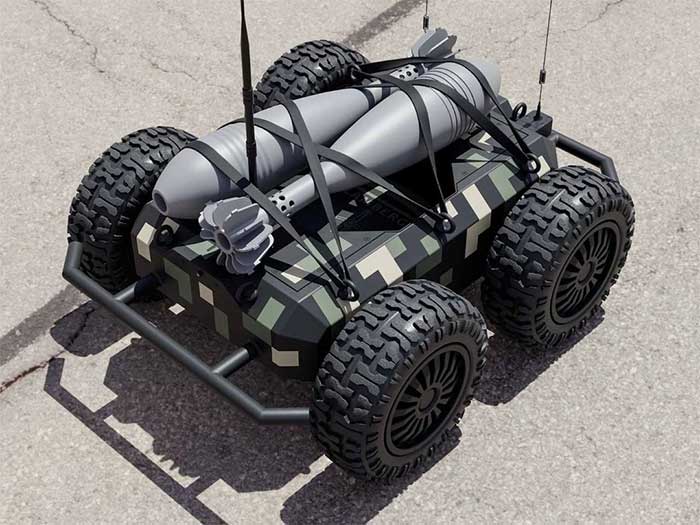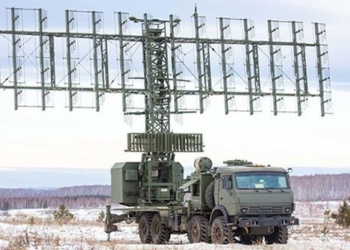The Ratel S robot is considered a “drone on the ground” developed by Ukraine and has become a nightmare for Russian armored vehicles and tanks in the ongoing conflict.
This weaponized vehicle is referred to by Ukraine as a “drone on the ground”, named Ratel S. Its name and design are inspired by the honey badger (scientific name: Mellivora capensis), one of the fiercest animals in the world.

Ratel S is inspired by the honey badger, one of the fiercest animals in the world. (Illustration: Futura Science).
The Ratel S is controlled via a radio wave system and runs on four wheels. Notably, it can carry anti-tank mines or explosives and operates as a suicide vehicle, aimed at destroying armored vehicles of the Russian army.
This weapon was recently announced by Ukraine’s Minister of Digital Transformation, Mykhaïlo Fedorov. It has been researched and developed over several months under the auspices of Brave 1, a unit dedicated to developing advanced military technologies in Ukraine.
After field testing, the Ratel S is now operational and will be deployed on the battlefield in southern and eastern Ukraine in the conflict with Russia.
Ground-based Suicide Drone
The Ratel S is compact and equipped with an electric motor, designed to traverse all terrains, capable of reaching a maximum speed of 24 km/h, with an operational time of 2 hours.
According to the Ukrainian military, this weaponized vehicle can overcome obstacles up to 25 cm high, moving across terrain similar to that of a Jeep.
The military will control it remotely using a radio screen or through FPV goggles, with battlefield images transmitted directly via cameras installed on the Ratel S.
To extend its operational range or increase mission success rates, the Ratel S can be accompanied by a drone equipped with jamming technology, allowing this robot to approach targets with minimal obstruction.

The honey badger is one of the fiercest animals in the world.
The Ratel S chassis is designed to carry TM-62 anti-tank mines, capable of holding 7.5 kg of explosives, activated remotely as the robot approaches its target. It can also carry 82 mm mortar rounds.
Experts believe that this small-sized ground suicide drone will certainly be more suitable than small-caliber grenade-launching drones with explosive payloads (which have limited carrying capacity) in combating Russian armored vehicles. It is regarded as a terror for Russian tank or armored vehicle crews.
|
The honey badger (Mellivora capensis) is a mammal belonging to the weasel family. They have a body length of 55-70 cm and stand less than 30 cm tall. Despite their relatively small size, honey badgers are rarely hunted in the wild. The secret lies in their very thick skin, particularly around the neck, which is up to 6 mm thick, allowing them to effectively withstand lethal bites. Additionally, they possess short but notably robust legs, along with sharp claws, which can be used as effective weapons in addition to their sharp teeth. In some cases, the honey badger’s audacity and ferocity have helped it fend off much larger foes. This is when spirit and willpower become “weapons,” enabling the animal to prevail even before the battle begins. Most remarkably, they have a high resistance to venom. Wildlife filmmakers have witnessed honey badgers being bitten by puff adders and Gaboon vipers (two of the most venomous snakes), causing them to faint and appear dead. However, just 2 hours later, the honey badger wakes up and remains healthy as if nothing had happened. |




















































